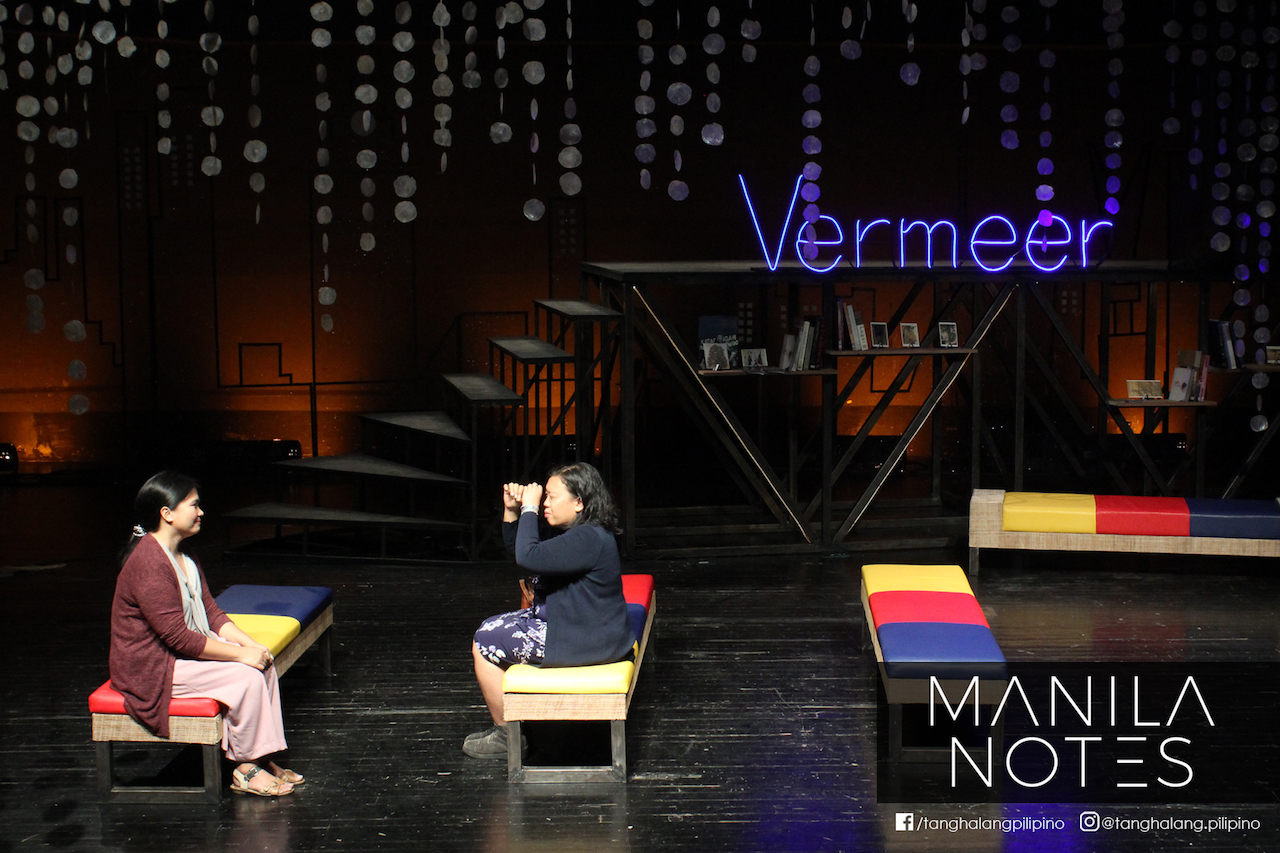
REVIEW: Passing conversations in “Manila Notes”
This one’s a thinker. Most of theater is usually a thinker, but this demands almost an academic appreciation of not just playwright Oriza Hirata’s work, but even of 17th century painter Johannes Vermeer.
Hirata’s method (he dubs as ‘quiet theater’) casts audiences as observers than consumers of a narrative or empathizers of a character’s experiences. Very little happens in the nearly 2-hour one-act, and whatever does happen, doesn’t feel too consequential. Hirata is staging an experience, more than anything else.
Originally Tokyo Notes, Hirata’s play has had many incarnations, its culture and context adapting to its host city. Here, the setting is a slightly changed Manila, one that is sixteen years into the future. This time jump isn’t much apparent (or, again, consequential) to the plot at hand, other than an oft-alluded war in Europe that caused Vermeer paintings to take shelter in a museum in Manila.

The Company of Manila Notes; photo c/o Tanghalang Pilipino
Conversations on stage overlap and the audience is almost invited to pick and choose which exchange to concentrate on. Do you follow the simmering family drama? The altruistic heiress? The tutor reuniting with an old student?
With Hirata’s direction (assistant director is Hazel Gutierrez), the technicality required to pull off overlapping conversations goes off neatly for the most part, with transitions being the hardest to follow before it eases into whichever conversation we need to follow.
It’s all very realistic: the dialogue, and even the kinds of people that find themselves at this museum thanks to Rody Vera’s pitch perfect adaptation of how characters would speak to each other, and relate to each other without losing the essence of Hirata’s original plot for them. Despite this, however, Hirata’s original intent are just on this side of implausible considering the play’s realism. There is a a young woman looking to sell artwork after finding herself an unwitting heiress of fortunes, and even a large middle class Filipino family choosing to reunite at an eclectic, modern museum.
To add to the realism, and the almost eavesdropping intent of the material, these individual stories hardly matter, and rarely do they go anywhere significant. Even the looming threat of an ongoing European war was mere texture to human conversations happening on stage, that in turn were mere texture to the characters concerned with their own subplots.
Like eavesdropping on stranger’s conversations, it also doesn’t offer context nor conclusion. We meet and part with these characters in medias res, and any satisfaction to be had by the audience is in the mild intrigue of hearing about the fascinating goings-on of other people’s lives.

L-R: Meann Espinosa, Mayen Estanero; photo c/o Tanghalang Pilipino
Itaru Sugiyama’s set is that of a modern museum that looked a bit too modern for Vermeers, and too busy with the curtain of scales that draped above the stage. The 20-person cast, especially Meann Espinosa and Mayen Estranero as sister in laws of a large, reuniting family, made their respective plots intriguing to watch with their performances, with only Marco Viana’s take as an heiress’ lawyer a bit too on the theatrical side that made his subplot unclear.
Manila Notes, staged by Tanghalang Pilipino in partnership with the Japan Foundation, does give local audiences a theatrical experience that is unique and certainly more educational than it is entertaining, and even provides insight to Japanese culture and Japanese theater that’s an eye-opening experience for students of theater and theater enthusiasts alike.
